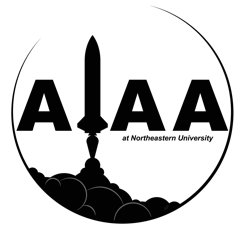Sub-projects for Karman include launch tower design for the full scale, development of a two stage rocket, design of the full scale launch vehicle, a drop-in stabilization system using CO2 thrusters, and development of custom avionics boards and software.
Launch Tower: Traditionally high powered rockets use nylon lugs that protrude from the airframe and slide into T-slot framing, that acts as a guide for the rocket in the beginning of flight. The problem is that they also cause large amounts of drag on the rocket, losses that are critical when trying to reach 100km with solid rocket motors. The solution is to build a launch tower that guides the rocket vertically, without requiring any additional hardware affixed to the rocket itself. The Launch Tower team began development of a button-less rail tower in June 2016 and has created a design that will begin construction and testing in January 2017.
Two Stage Rocket: As the full scale will be a two stage rocket, we wanted to rove our competency with two stage launches and test out possible designs. Carryall began development in September 2016, and by December 2016 has a working design and simulation for the test rocket, as well as began construction on the body. The largest construction task is the machining of the interstate, requiring lathing down the solid six inch diameter by two foot cylinder of aluminum. Progress could was not able to be made from November through December, as the only lathe on campus large enough for such a task and additionally the knowledgeable machinist’s time, was taken up by the College of Engineering capstone groups consisting of seniors completing their final school project. The team plans to start and finish the interstage by mid January 2017, allowing them to finish construction by February. NUSS Lazarus, it will be retrofitted to serve as the sustainer stage on top of the launch vehicle developed by this project. We are aiming for a launch in this configuration by early May 2016. Additionally after a successful launch in the NUSS Lazarus configuration, as well as a good launch of Beyond, Beyond will be retrofitted to fly as the sustainer stage on this booster section. Our goal is to fly the NUSS Lazarus as a two stage at LDRS (Large Dangerous Rocket Ships) April 9th-13th in Maryland.
Aluminum Fabrication: This group’s main focus was on developing the body for the full scale rocket. Their focus was on working with the Avionics group to find a way to communicate through the aluminum rocket body, as well as source aluminum for the body itself. The group is also responsible for creating the CAD model of the full scale rocket.
Avionics: This groups is working on developing the flight electronics for the full scale rocket, both hardware and software. It began as a capstone project, and development has continued as a subproject of Karman. The flight electronics will be responsible for tracking of the rocket in flight, providing telemetry to a ground station, igniting the second stage, and deploying all recovery systems during decent.
